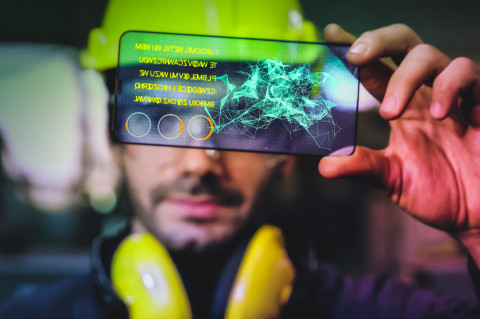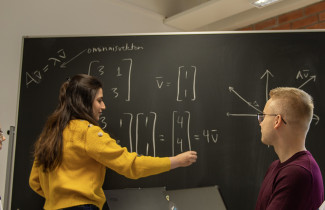“Photonics is about light: we create, modify, observe and move light from one place to another,” Head of the Institute of Photonics, Professor Jyrki Saarinen says.
“Photonics comprises visible light as well as infrared (thermal) and UV radiation. In addition to natural light from the sun, light is also generated by various lamps, lasers and displays.”
“Photonics is enabling by nature,” Impact Manager Juha Purmonen from the Photonics Research and Innovation PREIN Flagship on says.
“We now have products that have never existed before, such as CDs and flat televisions. However, the most important aspect of photonics is perhaps its potential to solve global challenges, such as issues related to the climate, energy production and health,” he says.

Yet, photonics is still in its infancy. It is an enormously broad sector, which includes, for example, the production of solar energy, applications in medicine and telecommunications, electricity production and solutions to reduce and bind carbon dioxide.
“There will be many new sources of light, such as lasers in medicine and infinitely short pulses of light (femtoseconds and picoseconds), which we haven’t really been able to even identify before. The next 20–30 years will be an interesting time,” Saarinen says.
Many things will change already in the near future, considering that the development of autonomous vehicles and mobile phones, for example, has been rapid.
“In photonics, there will be a significant leap forward in the usability and prevalence of new products and services.”
“This is a century of photonics and biotechnology.”
Professor Jyrki Saarinen
Head of the Institute of Photonics

Photonics research at the University of Eastern Finland has served as an incubator for many companies now operating in the field. Dispelix is one example, and the company manufactures display components for augmented reality, among other things.
“Our company started as a spin-off from VTT Technical Research Centre of Finland. Joensuu is a good place to operate because of the university’s extensive research activities and clean room laboratories. We also recruit doctoral and Master’s level graduates from the university,” Dispelix’s VP of Manufacturing & Site Manager Petri Stenberg says.
“Currently, Dispelix is manufacturing see-through displays for augmented reality. There is plenty of demand for AR glasses and the market is of a considerable size.”
“Automation is a competitive factor in device manufacturing. Nanophotonics requires expertise and well-functioning production chains. The development of photonics will improve quality and the way quality is measured.”
“The first AR glasses will become available to consumers in a couple of years.”
Petri Stenberg
VP of Manufacturing & Site Manager, Dispelix Oy
Alternative displays, smart watches and smart glasses are believed to replace mobile phones over time. Wearable computers that utilise AR displays are already available to consumers.
“Sophisticated additional features, such as navigators, may well be of interest to the consumer,” Stenberg says.
According to Purmonen, companies in the field of photonics are currently focusing either purely on exports or only on the domestic market. A great number of components is being produced for domestic export companies. For example, there is a considerable amount of photonics in paper-making machines.
Exporting photonics-related expertise is also important.
“Research conducted at our university is excellent in many respects, and we are involved in several EU projects. Our international Master’s Degree Programme in Photonics, which just celebrated its 10th anniversary, is also very popular,” Saarinen says.
The International Day of Light is celebrated annually on 16 May.
Read more






